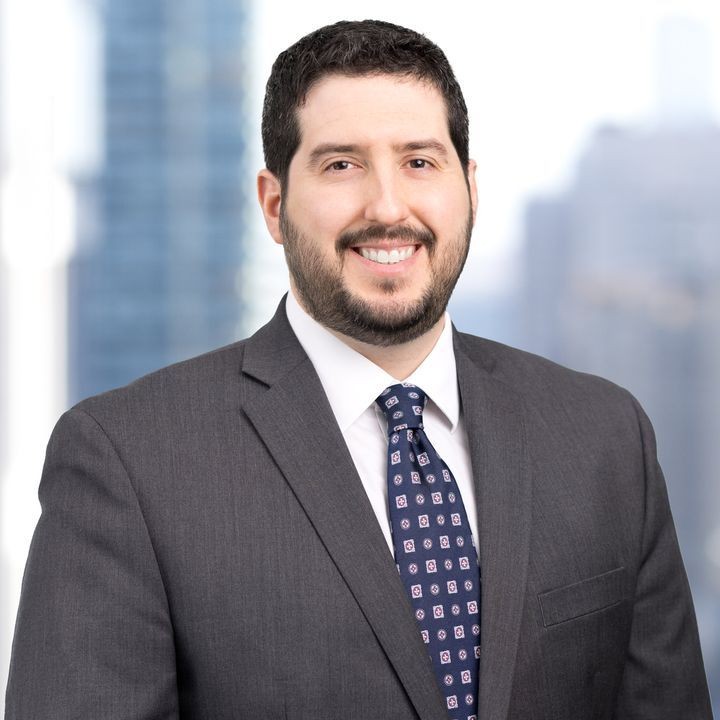NOL Carryback Waiver Guidance for Consolidated Groups
Client Alert | 8 min read | 08.04.20
On July 2, 2020, the Department of the Treasury and Internal Revenue Service (collectively, the Treasury) issued temporary regulations (the Temporary Regulations) under Section 1502 of the Internal Revenue Code of 1986, as amended (the Code),1 providing guidance to consolidated groups related to waiving the net operating loss (NOL) carryback period under Section 172 for certain losses attributable to certain acquired members.2
Background
As amended by the Coronavirus Aid, Relief, and Economic Security Act (the CARES Act),3 Section 172 delays the prohibition on NOL carrybacks enacted by the Tax Cuts and Jobs Act (the TCJA).4 The amended statute allows taxpayers to carry back an NOL arising in a taxable year beginning after December 31, 2017, and before January 1, 2021, to each of the five taxable years preceding the taxable year in which the NOL arises. In the consolidated return context, the NOL carryovers and carrybacks for a taxable year are determined under the principles of Section 172 and Treasury Regulation § 1.1502-21. The regulations define a consolidated NOL (CNOL) for a consolidated return year as the excess of the consolidated group’s deductions over the consolidated group’s gross income as determined under the regulations. Thus, current losses of members are first offset by the income of other members before the group generates a loss for the taxable year. A consolidated group’s CNOLs generally are utilized in the order of the taxable years in which they arose, and CNOLs carried from the same taxable year, and which are available to offset consolidated taxable income, generally are utilized on a pro rata basis.
CNOLs attributable to a recently acquired member of a consolidated group had presented carryback issues prior to the prohibition on NOL carrybacks enacted by the TJCA. CNOLs attributable to an acquired member can be carried to consolidated return years for the group of which it is currently a member or to a taxable year for which the acquired member had previously filed a stand-alone return or had joined in the filing of a consolidated return by another group of which it was previously a member, referred to as a separate return year.5 Thus, the carryback of the acquired member’s portion of a CNOL could impact returns with which the acquired member was no longer affiliated. Existing consolidated return regulations allow the acquiring consolidated group to waive the applicable carryback period in certain instances to address this issue.
A consolidated group that acquired a group member after enactment of the prohibition of carrybacks under the TCJA and prior to the enactment of the new carryback rules under the CARES Act faces unique issues when carrying back losses. The acquiring consolidated group would have been unaware at the time of the acquisition that carrybacks would now be allowed, and would face the possibility that a carryback of losses could benefit other taxpayers that are not a part of the acquiring consolidated group. The Temporary Regulations provide the acquiring consolidated group with the opportunity to waive all or a portion of the pre-acquisition carryback period for certain losses attributable to a recently acquired member that was previously a member of another consolidated group (such member, an “acquired member”).
Waiver Elections under Existing Treasury Regulations
Section 172(b)(3) allows a taxpayer to make a “general waiver election” to irrevocably relinquish the entire NOL carryback period to which the taxpayer would otherwise be entitled under Section 172(b)(1).6 Similarly, a consolidated group is permitted to make a general waiver election under Section 172(b)(3) to irrevocably relinquish the entire carryback period with respect to a CNOL for any consolidated return year (Election 1). Election 1 must be made for the consolidated return year in which the CNOL arises. Furthermore, Election 1 applies to all members of the group for the year for which the election is made, and cannot be made separately for any member of the group.7
The consolidated return regulations also permit a limited “split-waiver election” so that an acquiring consolidated group does not have to carryback an acquired member’s portion of the group’s CNOL to the acquired member’s former group (Election 2). Election 2, unlike Election 1, is not a yearly election and applies to all CNOLs attributable to an acquired member that otherwise would be required to be carried back to a taxable year of the acquired member’s former consolidated group.8 It is important to note, however, that Election 2 is only available with respect to a corporation that was acquired from another consolidated group and with respect to the portion of the carryback period for which that corporation was a member of another consolidated group. The Treasury issued proposed regulations9 in 2012 that would amend Election 2 to make it available with respect to any acquired corporation, regardless of whether such corporation was acquired from another consolidated group, and to waive the entire carryback period with respect to the CNOLs allocable to the acquired corporation, not just the period during which the acquired corporation was a member of another consolidated group. These proposed regulations would generally apply to acquisitions occurring on or after the date they are finalized.10
Election 2 is required to be made with the acquiring consolidated group’s original consolidated return for the year in which the acquired member joins the group.11 If Election 2 is not made with the appropriate original federal income tax return, the election cannot later be made by amending that return or by attaching the election to the consolidated return for a later year.
This filing requirement for Election 2 poses significant issues for a consolidated group that did not see a need to make Election 2 with respect to an acquired member after enactment of the TCJA’s prohibition on CNOL carrybacks. If, for example, an acquiring consolidated group did not make Election 2 and the acquired member subsequently contributed to the acquiring consolidated group’s CNOL, the CARES Act put this acquiring consolidated group in the unfortunate position of having to choose between: (i) making Election 1 to waive the entire carryback period for the group’s entire CNOL generated for the taxable year and lose the opportunity to obtain a refund of prior year taxes, or (ii) carrying back the acquiring consolidated group’s entire CNOL for the taxable year, even if that means the acquired member’s portion of the CNOL would be carried back to a taxable year of, and generate a refund for, the acquired member’s former group.
To avoid this result, the Temporary Regulations provide two additional types of split-waiver elections for consolidated groups with an acquired member that has CNOLs that, as a result of a statutory amendment to Section 172, become eligible to be carried back further than was allowed at the time of the acquisition.12
Amended Statute Split-Waiver Election
The Temporary Regulations allow an acquiring consolidated group to make with respect to an acquired member’s portion of a CNOL an “amended statute split-waiver election” to irrevocably relinquish the entire pre-acquisition portion of the carryback period (including both the default carryback period under then-existing law and the extended carryback period provided by the relevant statutory amendment to Section 172) during which the acquired member was a member of any former consolidated group (Election 3). Election 3 is available to the acquiring consolidated group notwithstanding that the group did not make Election 2 in the year in which the acquired member became a member of the consolidated group. Additionally, an acquiring consolidated group may make Election 3 on a year-by-year basis. Thus, the acquiring consolidated group may make Election 3 for the acquired member’s portion of a CNOL that arises in any particular taxable year to which the extended carryback period applies, regardless of whether the group makes an election for CNOLs arising in other consolidated return years.13
Extended Split-Waiver Election
The Temporary Regulations provide additional flexibility by allowing an acquiring consolidated group to make an irrevocable “extended split-waiver election” (Election 4), which provides the same relief as Election 3 but applies solely to the additional years added to the carryback period by the relevant statutory amendment to Section 172.14 Any CNOL carryback to a taxable period required at the time of the acquisition would be unaffected by Election 4. As with Election 3, Election 4 is available to an acquiring consolidated group on a year-by-year basis and regardless of whether the group makes an election for CNOLs arising in other consolidated return years.15
Making an Election
The Temporary Regulations set forth various conditions and procedures for making Election 3 or Election 4. An acquiring consolidated group can make either election (but not both) only if: (1) the group has not filed Election 1 for the taxable year in which the CNOL was incurred, (2) the group has not filed Election 2 with respect to the acquired member, (3) any other corporation joining the group that was affiliated with the acquired member immediately before the acquired member joined the group is included in the election, and (4) the acquired member’s former group does not claim any carryback of the CNOL on a return or other filing filed on or before the date the group files the election.16
The election generally must be made by attaching a statement to the acquiring consolidated group’s timely filed federal income tax return (including extensions) for the year during which the CNOL is incurred. Alternatively, the election may be attached to an amended return filed no later than 150 days after the effective date of the relevant statutory amendment to Section 172. With respect to the statutory amendment enacted by the CARES Act, if the required filing date of the applicable consolidated return precedes November 30, 2020, the election statement may be attached to an amended return filed no later than November 30, 2020.17
Effective Date
The Temporary Regulations apply to any CNOLs arising in taxable years ending after July 2, 2020 (the date the Temporary Regulations were issued); however, taxpayers may apply the Temporary Regulations to any CNOLs arising in a taxable year beginning after December 31, 2017 (consistent with the changes to Section 172 enacted by the CARES Act). The Temporary Regulations will expire on July 3, 2023,18 unless finalized sooner.
1 Unless otherwise noted, all “Section” references are to the Code.
2 T.D. 9900. The text of the Temporary Regulations also serves as part of the text of proposed regulations (REG-125716-18, the “Proposed Regulations”) also issued by the Treasury on July 2, 2020. In addition to the waiver guidance provided under the Temporary Regulations, the Proposed Regulations implement certain recent statutory amendments to Section 172. A discussion of the Proposed Regulations is beyond the scope of this publication.
3 Pub. L. No. 116-136.
4 Pub. L. No. 115-97. Exceptions to this prohibition were provided for non-life insurance companies and farming businesses; these exceptions are beyond the scope of this publication.
5 Treas. Reg. § 1.1502-21(b), (e).
6 This election must generally be made by the tax return filing due date (including extensions) for the taxable year of the NOL for which the election is being made. Earlier guidance addressing the changes made by the CARES Act provided that this election with respect to NOLs arising in a taxable year beginning in 2018 or 2019 must be made no later than the due date (including extensions) for filing the taxpayer’s tax return for the first taxable year ending after March 27, 2020. Section 172(b)(1)(D)(v)(II); Rev. Proc. 2020-24, 2020-18 I.R.B. 750.
7 Treas. Reg. § 1.1502-21(b)(3)(i). Election 1 must be made in a separate statement filed with the consolidated group’s tax return for the year in which the CNOL arises. Id.
8 Treas. Reg. § 1.1502-21(b)(3)(ii)(B).
9 REG-140668 -07.
10 Prop. Treas. Reg. § 1.1502-21(b)(3)(ii)(B), (h)(5).
11 Id.
12 The acquiring consolidated group may face additional carryback issues under the CARES Act that are not addressed by the Temporary Regulations. For example, the acquiring consolidated group may have expected to inherit the acquired member’s pre-acquisition losses under the TCJA but has covenanted not to waive the carryback period under the acquisition agreement.
13 See Temp. Treas. Reg. § 1.1502-21T(b)(3)(ii)(C)(1), (2).
14 For taxable years beginning after December 31, 2017 and before January 1, 2021, Election 3 and Election 4 generally should have the same result. Due to the TCJA’s prohibition on NOL carrybacks, the five-year carryback period permitted under the CARES Act is both the entire carryback period for purposes of Election 3 and the extended carryback period for purposes of Election 4.
15 See Temp. Treas. Reg. § 1.1502-21T(b)(3)(ii)(C)(1), (2).
16 Temp. Treas. Reg. § 1.1502-21T(b)(3)(ii)(C)(3).
17 Temp. Treas. Reg. § 1.1502-21T(b)(3)(ii)(C)(5), (6).
18 Temp. Treas. Reg. § 1.1502-21T(h)(9).
Contacts
Insights
Client Alert | 4 min read | 01.15.26
Access to Public Domain Documents Pilot: Practice Direction 51ZH
The Pilot codifies the position at common law, set out by Lady Hale in Cape Intermediate Holdings Ltd v Dring [2019] UKSC 38, which permits the public the right of access to documents placed before a court and referenced in a public hearing[4]. This Pilot will apply to cases heard in the Commercial Court, the London Circuit Commercial Court (King’s Bench Division), and the Financial List (Commercial Court and Chancery Division)[5].
Client Alert | 4 min read | 01.14.26
Client Alert | 3 min read | 01.13.26
Client Alert | 7 min read | 01.13.26




